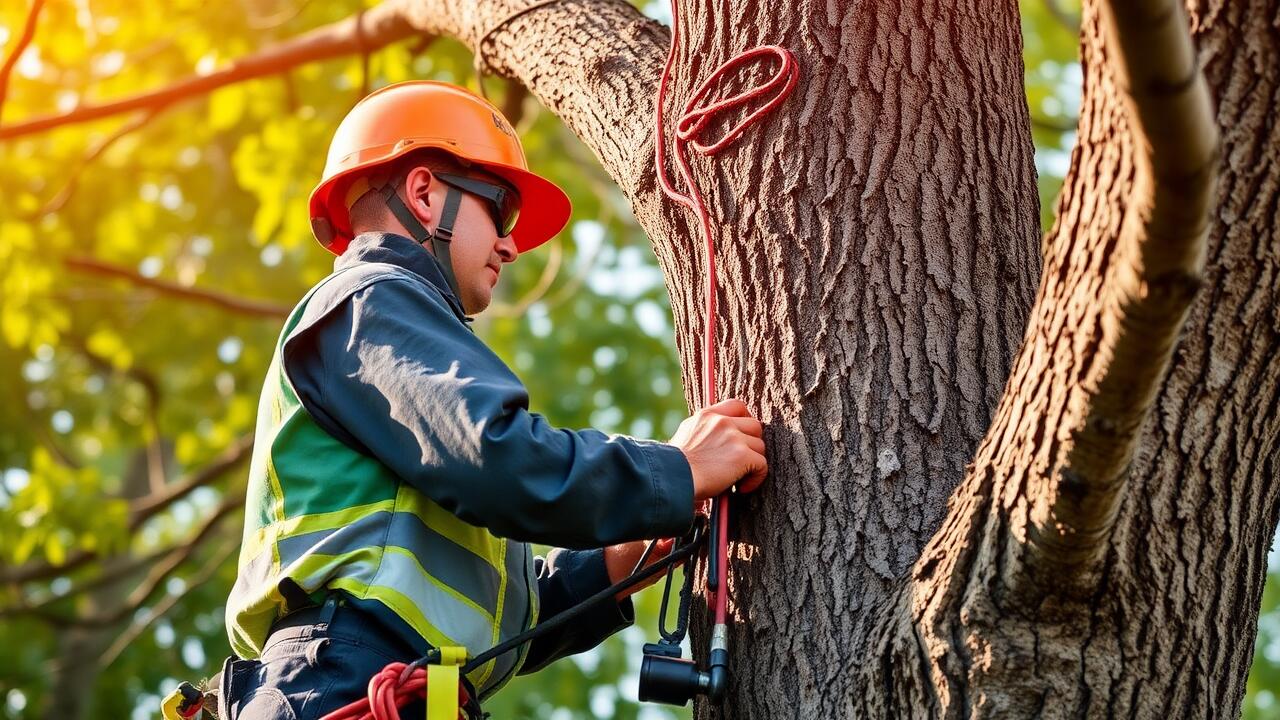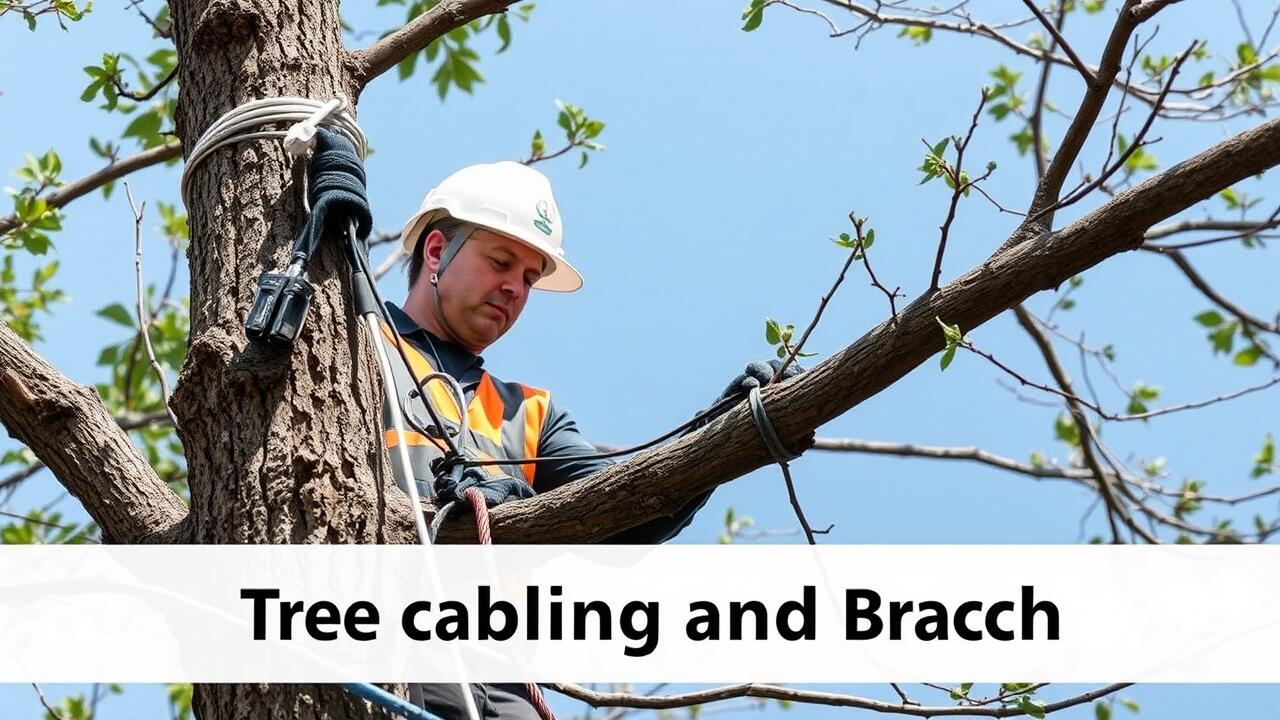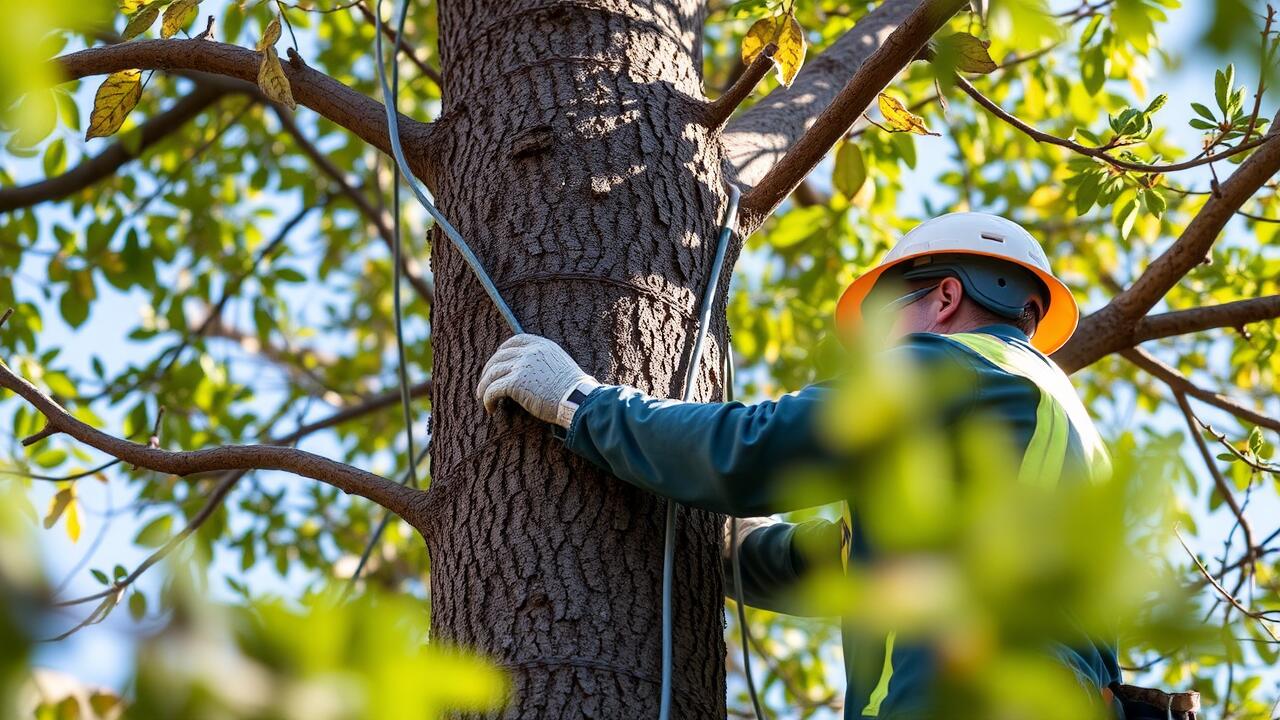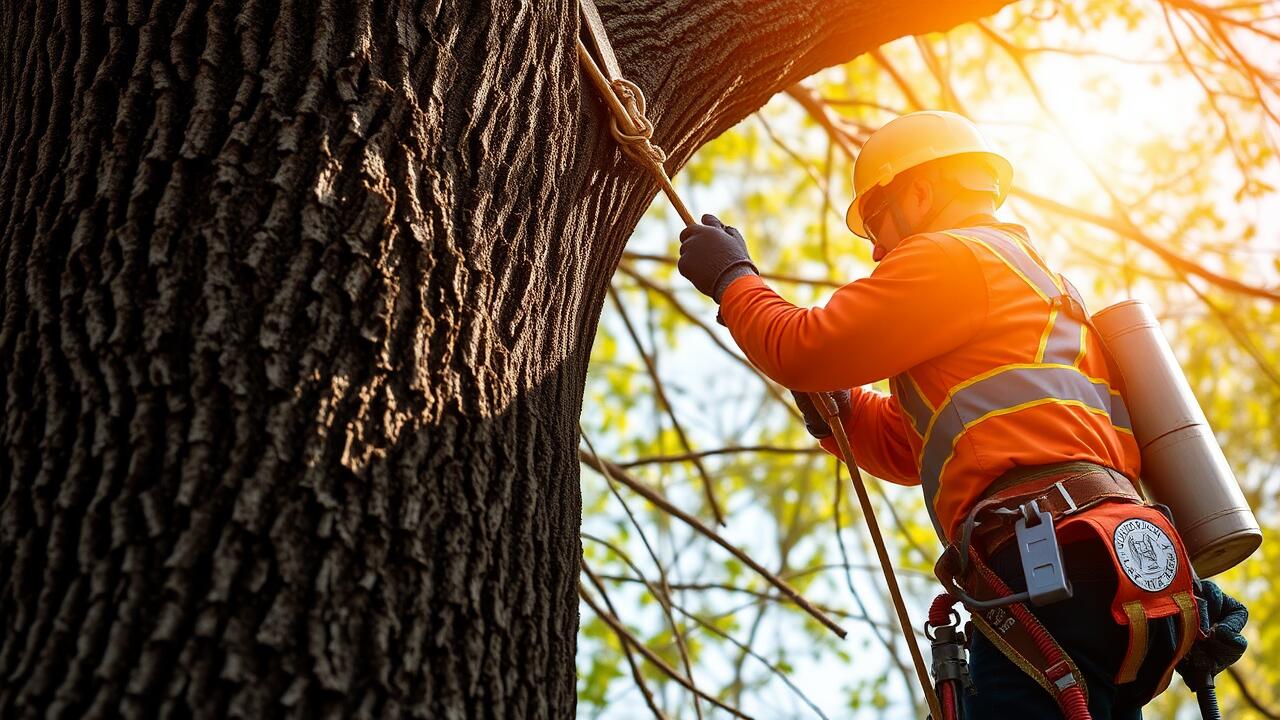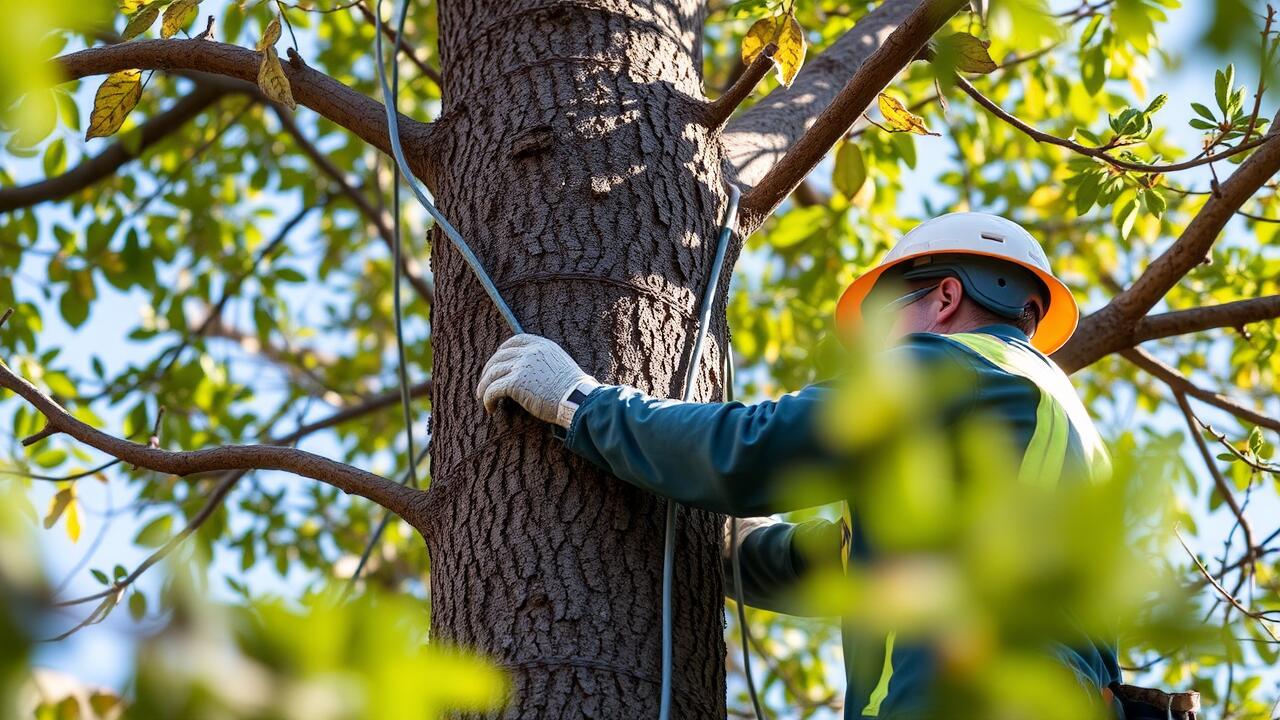
Installation Process for Tree Cabling
The installation process for tree cabling involves several essential steps to ensure the safety and stability of the tree. First, it is crucial to assess the tree's structure, health, and location. Proper evaluation helps in determining the best cabling points and the type of hardware required. After identifying the optimal locations, installers must select high-quality cables and hardware that can withstand environmental stress while providing adequate support.
Next, the cables need to be securely attached to the tree using appropriate techniques. This usually involves drilling small holes for the anchors or using adjustable straps to create tension. It is important to avoid damaging the tree during installation. Regular assessments should follow to ensure that the cabling remains effective. For residents in the area, Morningside Lenox Park, Atlanta Tree Cabling and Bracing provides professional services to accomplish this safely and efficiently.
Step-by-Step Guide to Proper Cabling
Begin by assessing the tree’s condition and structure. Identify weak branches or splits that require support. Choosing the right materials is crucial; durable and weather-resistant cables and hardware are often recommended for long-lasting support. For residents seeking professional services, Virginia Highland, Atlanta Tree Cabling and Bracing can provide expert advice and assistance tailored to your specific needs.
Once the materials are gathered, carefully plan the installation points on the tree. Ideally, cables should be anchored to healthy branches with suitable spacing to distribute weight evenly. Ensure proper tension on the cables to avoid any damage to the tree. Checking the setup periodically helps maintain the integrity of the system and the health of the tree. Regular inspections allow for adjustments and reinforce the importance of proper installation practices.
Installation Process for Tree Bracing
The installation process for tree bracing involves a careful assessment of the tree’s structural integrity. Identifying weak points requires the expertise of an arborist who can evaluate the tree’s health and determine the most effective location for braces. Once suitable areas are identified, the next step is to select appropriate materials, ensuring they are strong enough to withstand environmental forces while minimizing damage to the tree.
After selecting materials, the bracing can begin. This typically involves anchoring braces either to the trunk or the branches, depending on the specific needs of the tree. Proper tension needs to be applied during installation to avoid any stress that could affect the tree’s growth. For residents in the area, seeking services like “Grant Park, Atlanta Tree Cabling and Bracing” can provide professional assistance in executing these techniques safely and effectively.
Techniques for Effective Bracing
Effective bracing techniques are essential for providing support to trees that exhibit structural weakness or have suffered from damage. One common approach involves the use of flexible braces such as rods or cables that connect the leaning or compromised tree to a stable upright pole or another stronger tree. This method helps distribute weight evenly and reduces stress on vulnerable branches. Additionally, materials used for bracing should be chosen carefully to prevent damage to the tree while offering the necessary support.
When developing a bracing plan, professionals often assess several factors including the tree species, size, and specific issues that need addressing. Properly installed braces must have just the right tension to allow for natural movement while preventing excessive sway. Regular inspections are vital to ensure that the braces remain effective over time. Consulting experts like those at Kirkwood, Atlanta Tree Cabling and Bracing can provide tailored strategies that cater to individual tree needs, enhancing longevity and structural integrity.
Maintenance of Tree Cabling Systems
Regular maintenance of tree cabling systems is essential for ensuring their longevity and effectiveness. Periodic inspections help identify any signs of wear, damage, or corrosion that may compromise the system. Monitoring the tension of cables and checking for any shifting in the tree’s position can prevent potential failures. This proactive approach allows for timely adjustments or replacements, which can save both time and resources.
Properly maintained cabling also contributes to the overall health of the tree. Well-installed systems, like those provided by Atlanta Tree Cabling and Bracing, promote stability without hindering growth. Removing any obstructions or debris from around the cables can help prevent chafing and encourage optimal performance. Regular assessments by professionals ensure that support systems achieve their intended purpose while safeguarding the tree's structure.
Ensuring Longevity and Effectiveness
To ensure the longevity and effectiveness of tree cabling systems, regular inspections are essential. Conducting evaluations at least once a year allows for the identification of any wear and tear on the materials. Inspecting for rust, fraying cables, or loose connections helps maintain the integrity of the cabling. Trees can grow over time, which may necessitate adjustments to the cabling system. Keeping an ongoing maintenance schedule minimizes the risk of system failure and enhances tree health.
Professional services, such as Inman Park, Atlanta Tree Cabling and Bracing, can provide expert assessments and make necessary adjustments. Their experience ensures that the cabling remains effective even as the tree grows. Additionally, they can recommend alternative methods or supplementary support if the tree’s condition changes. Employing such services contributes to the overall safety and stability of the tree, prolonging the benefits of the cabling system.
FAQS
What is tree cabling?
Tree cabling is a method used to support weak or damaged branches by installing cables that connect them to a stronger part of the tree or to other branches. This technique helps to reduce the risk of breakage and can enhance the overall stability of the tree.
What is tree bracing?
Tree bracing involves the installation of rods or braces to provide additional support to weak or compromised tree structures. This method helps to stabilize the tree and prevent further damage during storms or high winds.
When should I consider tree cabling or bracing?
Tree cabling or bracing should be considered when you notice signs of structural weakness, such as split branches, extensive lean, or large cavities. Consulting a certified arborist can help determine the best course of action.
How long do tree cabling and bracing systems last?
The longevity of tree cabling and bracing systems can vary based on factors like tree species, environmental conditions, and maintenance. Generally, they can last several years, but regular inspections are recommended to ensure their effectiveness.
Can tree cabling and bracing harm my tree?
When installed correctly by a professional, tree cabling and bracing are designed to support the tree without causing harm. However, improper installation or use of incorrect materials can lead to further injury, so it is crucial to hire an experienced arborist.
